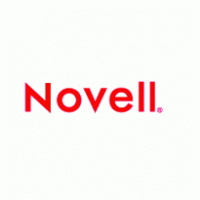Like so many other once high-flying software companies, Novell has struggled to come to terms with competition from Microsoft. But if its most recent quarter’s results are any guide, its decade-long decline at the hands of the voracious software giant seem to be at an end.
Ostensibly, the vendor of the NetWare network operating system reported double-digit year-on-year revenue growth in its first fiscal quarter, posting revenues up 10.6% to $271.1 million to the end of January 2002. And this at a time when most major software vendors – Microsoft apart – are struggling to grow at all.
So is CEO Jack Messman responsible for one of the greatest technology company comebacks in recent years? The answer lies in Novell’s judicious reporting of its first quarter financial results.
On deeper analysis, the sole reason for Novell’s impressive revenue growth is its March 2001 acquisition of software development and consulting services company Cambridge Technology Partners (CTP). Without the injection of $57.8 million in revenue from CTP, Novell’s supposedly strong quarter would have been as dismal as any other since its NetWare package started losing out to competing technology from Microsoft. But the pairing of CTP and Novell seems to have masked growing weaknesses in both, and vindicated the broad scepticism that the deal received from users and analysts when it was first announced.
|
||
The software side of the business, in particular, is heavily dependent on NetWare. The package still accounts for about half of Novell’s revenues and the bulk of its profitability. Yet sales of NetWare have been in steady decline since organisations began replacing it with Microsoft’s Windows NT/2000 – considered to be a technically superior product – or the Linux open source operating system, rather than upgrade to Novell’s new product, NetWare 6.0.
The only respite for Novell has been the slow economic climate, as many organisations that had planned to abandon NetWare in recent months have postponed migrating to Microsoft due to financial constraints. This has stemmed erosion of Novell’s dwindling market share, but does not detract from the fact that the company is struggling to get new business for its flagship product.
At the same time, the company’s efforts to find new sources of revenue growth among other products in its software portfolio have largely floundered. Products such as the Border Manager firewall, for example, have been criticised for being difficult to configure, while emerging technologies such as Novell’s eDirectory software – formerly known as Novell Directory Services (NDS) – have not taken off fast enough to fill the yawning gap left by falling NetWare sales.
However, eDirectory has been growing strongly since it was unbundled from the NetWare operating system in 1998, despite competition from a similar, but technically inferior, product from Microsoft called Active Directory, which is bundled with Windows 2000. EDirectory’s revenues grew a healthy 38% year-on-year in the first quarter of 2002.
And eDirectory’s performance could be set to improve, as Messman pins his company’s hopes on the web services capabilities Novell has built into the new version of the product, EDirectory 8.0. Once corporate adoption of web services technologies takes off – expected to be around 2003 – demand for directory software with built-in web services capability will grow considerably. This is because in order to access web services, users require a central location where programs and procedures can find out how to communicate with other programs and procedures. Demonstrating the critical role that directory software plays in a web services environment will, therefore, be crucial for Novell in the coming quarters.
EDirectory will certainly need to grow fast if it is to offset the continuing decline in Novell’s other software product sales. In the first quarter, overall product sales fell 13.4% to $199.3 million. Within that, revenues for the Net Management Services unit – which is largely NetWare and the GroupWise groupware software package – shrank by 18% to $154 million.
In short, any picture of a turnaround at Novell is little more than cosmetic. As NetWare’s installed base shrinks away, the company must prove it can capitalise on the CTP acquisition and find a product line that can inject a more tangible improvement in the company’s fortunes.










